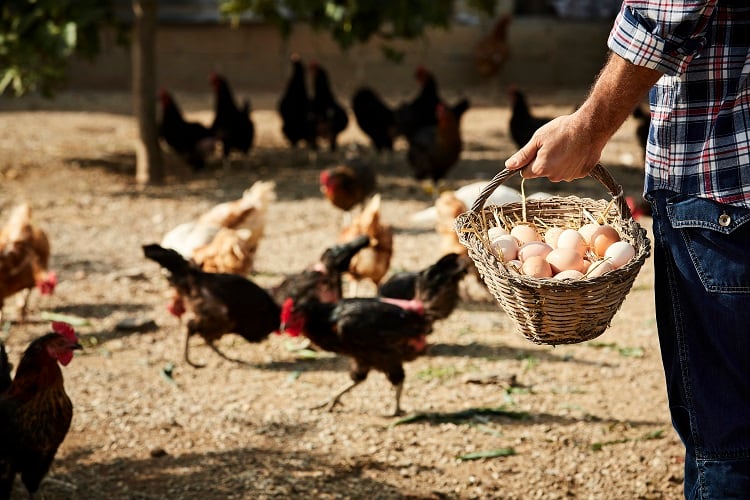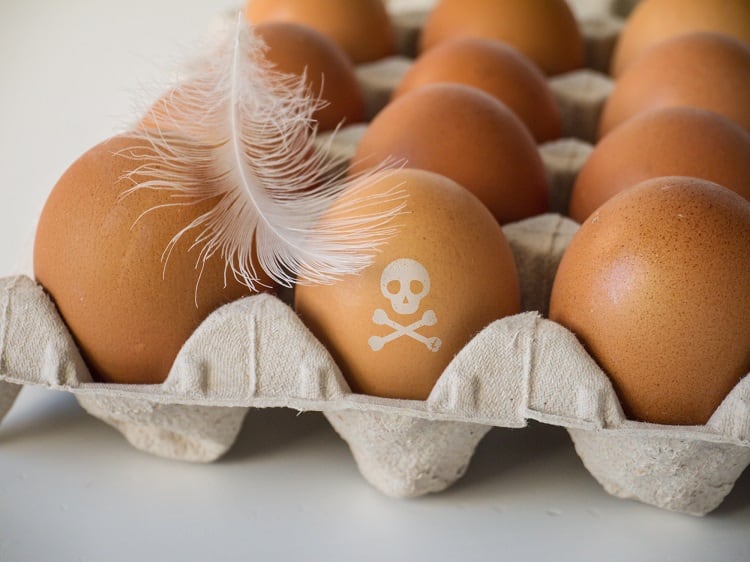In February 2022, health authority for Île-de-France Agence Régionale de Santé (ARS) advised citizens not to consume homegrown eggs sourced from chicken houses and coops in Paris’ 12th and 13th arrondissements, nor from Ivry, Alfortville and Charenton within the region.
The warning came after tests by NGO Toxicowatch revealed eggs were contaminated with persistent organic pollutants (POPs).
Now, just over one year later, ARS Île-de-France is advising all its citizens to avoid consumption of homegrown eggs sourced from the region.
The recommendation covers non-professional poultry houses, and does not concern the commercial production of eggs.
Persistent organic pollutants identified
The latest warning was triggered by findings from a new study by ARS Île-de-France covering 25 sites, including 14 in proximity to the three main waste incinerators around Paris, and 11 located further than three kilometres away.
Three families of POPs were identified – dioxins (PCDD), furans (PCDF) and polychlorinated biphenyls (PCB) – which means they are present throughout the urban environment and not specifically around incinerators.
As ARS Île-de-France explained, dioxins and furans are undesirable by-products of waste combustion, which be the result of incineration of household or green waste, as well as certain industrial processes such as the whitening of paper pulp.
PCBs are a family of synthetic chemical molecules. While employed at a large-scale during the 20th century for their lubricating and insulating properties, production has been banned since 1987. “Their presence in the environment is mainly due to old uses in urban areas (adhesives, oils, paints, etc.) and to accidental and localised pollution,” explained the regional health authority.
Of the 25 sites analysed, 21 samples were found to exceed the regulatory threshold for dioxins, furans and PCBs for marketed eggs, and two were found to have ‘particularly’ high levels of PCBs in eggs – up to 40-50 times the European regulatory threshold.
It is expected the full report of the study will be made public mid-2023.
Health risks for Parisians?
POPS are known to have a long lifespan in the environment, remaining for as long as decades after emissions have completely stopped. Being lipophilic, they concentrate in the fatty tissues of living organisms and can accumulate throughout the food chain.
“These molecules will accumulate after ingestion in the fatty tissues thus contaminating meat, fish, shellfish, milk and dairy products and eggs rich in fat,” explained ASR Île-de-France. “Food is therefore the main route of exposure for the general population.”
Indeed, more than 90% of total exposure to humans comes from food. It is understood that regular consumption of eggs from hens raised on contaminated soil leads to a risk of overexposure to these pollutants.
What are the health risks associated with overexposure? According to the health agency, regular consumption of foods contaminated with dioxins, furans and PCBs can have long-term health effects, such as an increased risk of cancer, fertility disorders, and metabolic effects such as diabetes. There is no treatment to remove these substances from the body.
As to why contamination is prevalent in Paris is likely linked to the city’s high urban density and the ‘intertwining’ of business zones and residential sectors. PCBs were used to a significant extent between the 1930s and 1970s in the capital, particularly in urban areas when painting buildings and urban infrastructure. Concerning dioxins and furans, the incineration of waste was higher and less controlled throughout the last century.
“These different elements make Paris and its inner suburbs a territory more likely to have soils contaminated by these pollutants,” according to ASR Île-de-France. “Rural areas are not spared by the deposits of these pollutants in the soil linked to incineration, open burning and old uses of PCBs. This is why the recommendation applies to the whole of Île-de-France…”




